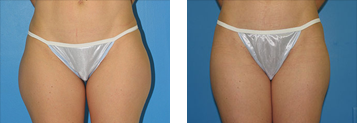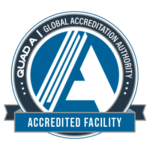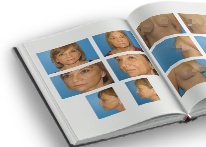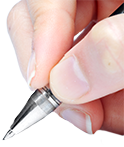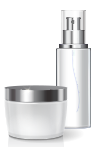Liposuction
LIPOSUCTION EXPERT IN BOSTON
Boston liposuction expert Dr. Katherine Hein understands and is sensitive to the difficulty that many adults have reducing localized pockets of fat from different areas of the body. Often, an individual can be at or marginally above his or her ideal body weight and still have stubborn fat deposits that are resistant to a healthy diet and exercise routine. For individuals in Boston, MetroWest, Wellesley and Sudbury who live a healthy lifestyle yet are still plagued with pesky “problem areas,” liposuction surgery may be the answer.
To schedule a private consultation with Dr. Hein to find out more about how liposuction can help you achieve your dream figure, contact Accurate Aesthetics by calling (877) 603-7874 toll-free.
WHAT IS LIPOSUCTION?
Learn About Liposuction
12 min 53 sec
Results may vary.
During the past decade, liposuction, which is also known as “lipoplasty” or “suction lipectomy,” has benefited from several new refinements. Today, a number of new techniques, including the tumescent technique, and the super-wet technique, are providing selected patients with more precise results and quicker recovery times.* Although no type of liposuction is a substitute for dieting and exercise, liposuction can remove stubborn areas of fat that don’t respond to traditional weight-loss methods.
Overall, liposuction is a procedure that can help sculpt the body by removing unwanted fat from specific areas, including the abdomen, hips, buttocks, thighs, knees, upper arms, chin, cheeks, and neck.
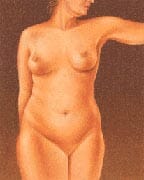 Women may have liposuction performed under the chin, on their hips, thighs, and stomach, and in the under arm and breast area.
Women may have liposuction performed under the chin, on their hips, thighs, and stomach, and in the under arm and breast area.
 For men, common liposuction sites include under the chin and around the waist. Liposuction may also be used in the reduction of enlarged male breasts, a condition known as gynecomastia.
For men, common liposuction sites include under the chin and around the waist. Liposuction may also be used in the reduction of enlarged male breasts, a condition known as gynecomastia.
If you’re considering liposuction, this website will give you a basic understanding of the procedure – when it can help, how it is performed and how you might look and feel after surgery. It won’t answer all of your questions since much depends on your individual circumstances. Please ask Dr. Katherine Hein if there is anything about the procedure you don’t understand.
WHO IS A GOOD CANDIDATE FOR LIPOSUCTION?
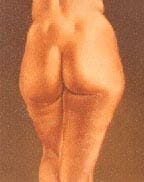 To be a suitable candidate for liposuction, you must have realistic expectations about what the procedure can do for you. It’s important to understand that liposuction can enhance your appearance and self-confidence, but it won’t necessarily change your looks to match your ideal or cause other people to treat you differently. Before you decide to have surgery, think carefully about your expectations, and discuss them with Dr. Katherine Hein.
To be a suitable candidate for liposuction, you must have realistic expectations about what the procedure can do for you. It’s important to understand that liposuction can enhance your appearance and self-confidence, but it won’t necessarily change your looks to match your ideal or cause other people to treat you differently. Before you decide to have surgery, think carefully about your expectations, and discuss them with Dr. Katherine Hein.
With the aforementioned information in mind, suitable liposuction candidates generally include adults who:
- Are at or marginally above their ideal body weight, and are confident they can maintain that weight after the procedure
- Are frustrated with localized pockets of fat that are resistant to healthy lifestyle practices
- Have good skin elasticity
- Are in sound physical and mental health
- Have realistic expectations for what can be achieved with liposuction
- Seek aesthetic improvement, not perfection
- Have a positive self-image in general but are bothered by certain problem areas
- Have made an independent decision to pursue liposuction surgery
While a person’s age is not a major consideration; however, older patients may have diminished skin elasticity and may not achieve the same results as a younger patient with tighter skin.
Liposuction carries greater risk for individuals with medical problems such as diabetes, significant heart or lung disease, poor blood circulation, or those who have recently had surgery near the area to be contoured.
WHAT ARE THE STEPS TO PLAN FOR LIPOSUCTION?
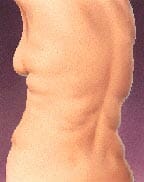 In your initial consultation, Dr. Hein will evaluate your health, determine where your fat deposits lie and assess the condition of your skin. She will explain the body contouring methods that may be most appropriate for you. For example, if you believe you want liposuction in the abdominal area, you may learn that an abdominoplasty or “tummy tuck” may more effectively meet your goals; or that a combination of traditional liposuction and skin excision would be the best choice for you.
In your initial consultation, Dr. Hein will evaluate your health, determine where your fat deposits lie and assess the condition of your skin. She will explain the body contouring methods that may be most appropriate for you. For example, if you believe you want liposuction in the abdominal area, you may learn that an abdominoplasty or “tummy tuck” may more effectively meet your goals; or that a combination of traditional liposuction and skin excision would be the best choice for you.
Be frank in discussing your expectations with Dr. Hein. She will be equally frank with you, describing the procedure in detail and explaining its risks and limitations.
Getting The Answers You Need
Individuals considering liposuction often feel a bit overwhelmed by the number of options and techniques being promoted today. We can help! In deciding which is the right treatment approach for you, Dr. Hein will consider effectiveness, safety, cost, and appropriateness for your needs. This is called surgical judgment, a skill that is developed through surgical training and experience. She also uses this judgment to prevent complications; to handle unexpected occurrences during surgery; and to treat complications when they occur.
Dr. Hein’s education, training, and years of experience have helped to form her surgical judgment. Dr. Hein is certified by the American Board of Plastic Surgery (“ABPS”). By choosing a plastic surgeon who is certified by the ABPS, a patient can be assured that the doctor has graduated from an accredited medical school and completed at least five years of additional residency – usually three years of general surgery (or its equivalent) and two years of plastic surgery. Dr. Hein also completed an additional year of training in Aesthetic Surgery at Harvard. To be certified by the ABPS, a doctor must also practice surgery for two years and pass comprehensive written and oral exams. The ABPS also requires plastic surgeons to be re-certified every ten years.
Preparing For Your Surgery
We will give you specific instructions on how to prepare for surgery, including guidelines on eating and drinking, smoking, and taking or avoiding vitamins, iron tablets and certain medications. If you develop a cold or an infection of any kind, especially a skin infection, your surgery may have to be postponed.
Also, while you are preparing for your liposuction surgery, be sure to arrange for someone to drive you home after the procedure and, if needed, to help you at home for a day or two.
Where Your Surgery Will Be Performed
Liposuction may be performed in Dr. Hein’s in-office accredited surgical suite, in an outpatient surgery center, or in a hospital. Dr. Hein currently operates at Newton Wellesley Hospital, MetroWest Medical Center, and Milford-Whitinsville Regional Hospital.
Smaller-volume liposuction is usually done on an outpatient basis for reasons of cost and convenience. However, if a large volume of fat will be removed, or if the liposuction is being performed in conjunction with other procedures, a stay in a hospital or overnight nursing facility may be required.
Anesthesia for Liposuction
Various types of anesthesia can be used for liposuction procedures. Together, you and Dr. Hein will select the type of anesthesia that provides the safest and effective level of comfort for your surgery.
If only a small amount of fat and a limited number of body sites are involved, liposuction can be performed under local anesthesia, which numbs only the affected areas. However, if you prefer, the local is usually used along with intravenous sedation to keep you more relaxed during the procedure. Regional anesthesia can be a good choice for more extensive procedures. One type of regional anesthesia is the epidural block, the same type of anesthesia commonly used in childbirth.
However, some patients prefer general anesthesia, particularly if a large volume of fat is being removed. If this is the case, a board-certified nurse anesthetist or an anesthesiologist will be with you to make sure you are completely asleep during the procedure.
WHAT IS THE LIPOSUCTION PROCESS?
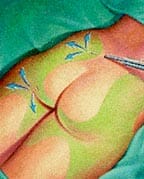 Liposuction is a procedure in which localized deposits of fat are removed to recontour one or more areas of the body. Through a tiny incision, a narrow tube or cannula is inserted and used to vacuum the fat layer that lies deep beneath the skin. The cannula is pushed then pulled through the fat layer, breaking up the fat cells and suctioning them out. The suction action is provided by a vacuum pump or a large syringe, depending on the surgeon’s preference. If many sites are being treated, your surgeon will then move on to the next area, working to keep the incisions as inconspicuous as possible.
Liposuction is a procedure in which localized deposits of fat are removed to recontour one or more areas of the body. Through a tiny incision, a narrow tube or cannula is inserted and used to vacuum the fat layer that lies deep beneath the skin. The cannula is pushed then pulled through the fat layer, breaking up the fat cells and suctioning them out. The suction action is provided by a vacuum pump or a large syringe, depending on the surgeon’s preference. If many sites are being treated, your surgeon will then move on to the next area, working to keep the incisions as inconspicuous as possible.
Fluid is lost along with the fat, and it’s crucial that this fluid be replaced during the procedure to prevent shock. For this reason, patients need to be carefully monitored and receive intravenous fluids during and immediately after surgery.
A cannula (suction tube) is inserted through small incisions in the skin. At the other end of the tube is a vacuum-pressure unit that suctions off the fat.
The time required to perform liposuction may vary considerably, depending on the size of the area, the amount of fat being removed, the type of anesthesia and the technique used.
ARE THERE VARIATIONS TO LIPOSUCTION TECHNIQUES?
Yes, there are variations to liposuction techniques. The basic technique of liposuction, as described above, is used in all patients undergoing this procedure. However, as the procedure has been developed and refined, several variations have been introduced.
Fluid Injection, a technique in which a medicated solution is injected into fatty areas before the fat is removed, is commonly used by plastic surgeons today. The fluid – a mixture of intravenous salt solution, lidocaine (a local anesthetic) and epinephrine (a drug that contracts blood vessels) – helps the fat be removed more easily, reduces blood loss, and provides anesthesia during and after surgery. Fluid injection also helps to reduce the amount of bruising after surgery.
The amount of fluid that is injected varies depending on the preference of the surgeon.
Large volumes of fluid – sometimes as much as three times the amount of fat to be removed – are injected in the tumescent technique. Tumescent liposuction, typically performed on patients who need only a local anesthetic, usually takes significantly longer than traditional liposuction (sometimes as long as 4 to 5 hours). However, because the injected fluid contains an adequate amount of anesthetic, additional anesthesia may not be necessary. The name of this technique refers to the swollen and firm or “tumesced” state of the fatty tissues when they are filled with solution.
The super-wet technique is similar to the tumescent technique, except that lesser amount of fluid are used. Usually, the amount of fluid injected is equal to the amount of fat to be removed. This technique often requires IV sedation or general anesthesia and typically takes one to two hours of surgery time.
ALL SURGERY CARRIES SOME UNCERTAINTY AND RISK
Liposuction is normally safe, as long as patients are carefully selected, the operating facility is properly equipped, and the physician is adequately trained.
As a minimum, your surgeon should have basic (core) accredited surgical training with special training in body contouring. Also, even though many body-contouring procedures are performed outside the hospital setting, be certain that your surgeon has been granted privileges to perform liposuction at an accredited hospital.
Your doctor must have advanced surgical skills to perform procedures that involve the removal of a large amount of fat (more than 5 liters or 5,000 ccs); ask your doctor about his or her other patients who have had similar procedures and what their results were. Also, more extensive liposuction procedures require attentive after-care. Find out how your surgeon plans to monitor your condition closely after the procedure.
However, it’s important to keep in mind that even though a well-trained surgeon and a state-of-the-art facility can improve your chance of having a good result, there are no guarantees. Though they are rare, complications can and do occur. Risks increase if a greater number of areas are treated at the same time, or if the operative sites are larger in size. Removal of a large amount of fat and fluid may require longer operating times than may be required for smaller operations.
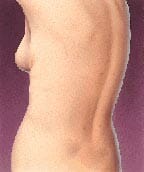 The combination of these factors can create greater hazards for infection; delays in healing; the formation of fat clots or blood clots, which may migrate to the lungs and cause death; excessive fluid loss, which can lead to shock or fluid accumulation that must be drained; friction burns or other damage to the skin or nerves or perforation injury to the vital organs; and unfavorable drug reactions.
The combination of these factors can create greater hazards for infection; delays in healing; the formation of fat clots or blood clots, which may migrate to the lungs and cause death; excessive fluid loss, which can lead to shock or fluid accumulation that must be drained; friction burns or other damage to the skin or nerves or perforation injury to the vital organs; and unfavorable drug reactions.
There are also points to consider with the newer techniques.
In the tumescent and super-wet techniques, the anesthetic fluid that is injected may cause lidocaine toxicity (if the solution’s lidocaine content is too high), or the collection of fluid in the lungs (if too much fluid is administered).
The scars from liposuction are small and strategically placed to be hidden from view. However, imperfections in the final appearance are not uncommon after lipoplasty. The skin surface may be irregular, asymmetric, or even “baggy,” especially in the older patient. Numbness and pigmentation changes may occur. Sometimes, additional surgery may be recommended. Improvement will become apparent after about six weeks, when most of the swelling has subsided.*
WHAT IS THE RECOVERY PROCESS AFTER LIPOSUCTION?
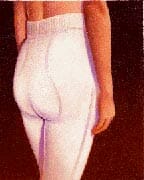 After surgery, you will likely experience some fluid drainage from the incisions. Occasionally, a small drainage tube may be inserted beneath the skin for a couple of days to prevent fluid build-up. To control swelling and to help your skin better fit its new contours, you may be fitted with a snug elastic garment to wear over the treated area for a few weeks. Your doctor may also prescribe antibiotics to prevent infection. A snug compression garment is worn after surgery to help reduce swelling.
After surgery, you will likely experience some fluid drainage from the incisions. Occasionally, a small drainage tube may be inserted beneath the skin for a couple of days to prevent fluid build-up. To control swelling and to help your skin better fit its new contours, you may be fitted with a snug elastic garment to wear over the treated area for a few weeks. Your doctor may also prescribe antibiotics to prevent infection. A snug compression garment is worn after surgery to help reduce swelling.
Don’t expect to look or feel great right after surgery. Even though the newer techniques are believed to reduce some post-operative discomforts, you may still experience some pain, burning, swelling, bleeding and temporary numbness. Pain can be controlled with medications prescribed by your surgeon, though you may still feel stiff and sore for a few days.
It is normal to feel a bit anxious or depressed in the days or weeks following surgery. However, this feeling will subside as you begin to look and feel better. It may take several months for the skin to retract and recontour around the areas that have been treated.
Getting Back To Normal
Healing is a gradual process. You should start walking around as soon as possible to reduce swelling and to help prevent blood clots from forming in your legs. You will begin to feel better after about a week or two and you should be back at work within a few days following your surgery. The stitches are removed or dissolve on their own within the first week to ten days.*
Activity that is more strenuous should be avoided for about a month as your body continues to heal. Although most of the bruising and swelling usually disappears within three weeks, some swelling may remain for six months or more.*
Dr. Hein will see you regularly to monitor your progress and to see if any additional procedures are needed.
If you have any unusual symptoms between visits – for example, heavy bleeding or a sudden increase in pain – or any questions about what you can and can’t do, please call us.
YOUR NEW LOOK
 You will see a noticeable difference in the shape of your body quite soon after surgery. However, improvement will become even more apparent after about four to six weeks, when most of the swelling has subsided. After about three months, any persistent mild swelling usually disappears, and the final contour will be visible.*
You will see a noticeable difference in the shape of your body quite soon after surgery. However, improvement will become even more apparent after about four to six weeks, when most of the swelling has subsided. After about three months, any persistent mild swelling usually disappears, and the final contour will be visible.*
 If your expectations are realistic, you will probably be very pleased with the results of your surgery. You may find that you are more comfortable in a wide variety of clothes and more at ease with your body. And, by eating a healthy diet and getting regular exercise, you can help to maintain your new shape.
If your expectations are realistic, you will probably be very pleased with the results of your surgery. You may find that you are more comfortable in a wide variety of clothes and more at ease with your body. And, by eating a healthy diet and getting regular exercise, you can help to maintain your new shape.
As healing progresses, a more proportional look will emerge.
A slimmer body contour can help you feel more confident and comfortable.
Click here for more information about Liposuction
Why You Should Select Accurate Aesthetics for your Liposuction Procedure
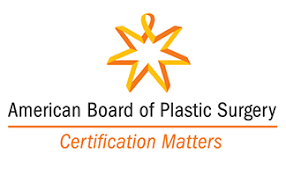 Dr. Katherine Hein is among the top cosmetic surgeons in the Boston, MetroWest, Wellesley, and Sudbury area. As a board-certified plastic surgeon and Medical Director of Accurate Aesthetics Plastic Surgery, Dr. Hein has helped thousands of satisfied patients achieve their cosmetic surgical face and body enhancements goals.
Dr. Katherine Hein is among the top cosmetic surgeons in the Boston, MetroWest, Wellesley, and Sudbury area. As a board-certified plastic surgeon and Medical Director of Accurate Aesthetics Plastic Surgery, Dr. Hein has helped thousands of satisfied patients achieve their cosmetic surgical face and body enhancements goals.
When you select Accurate Aesthetics Plastic Surgery for your liposuction procedure you can be reassured of a close personal relationship with Dr. Katherine Hein and her professional staff.
Additional Reasons to Select Accurate Aesthetics
- One-on-one consultation with Dr. Hein follow-up appointments after surgery, and availability by telephone for your questions.
- Availability of a fully certified operating room in-office for your comfort and privacy.
- The exclusive use of a certified Physician’s Assistant on each case to keep your surgery time shorter and safer.
- The use of a board-certified MD anesthesiologist or nurse anesthetist on each case.
- Consultation fee is deducted from the cost of any major surgery.
- One surgical compression garment is provided free for each surgery, as needed.
- Free Arnica Montana (pharmaceutical grade) anti bruising and swelling regimen with appropriate surgical procedures.
- Free general skincare session with a medical esthetician after any major surgical procedure.
*Results may vary and are not guaranteed. Consult with the medical professionals at Accurate Aesthetics Plastic Surgery to see if you are a candidate.

